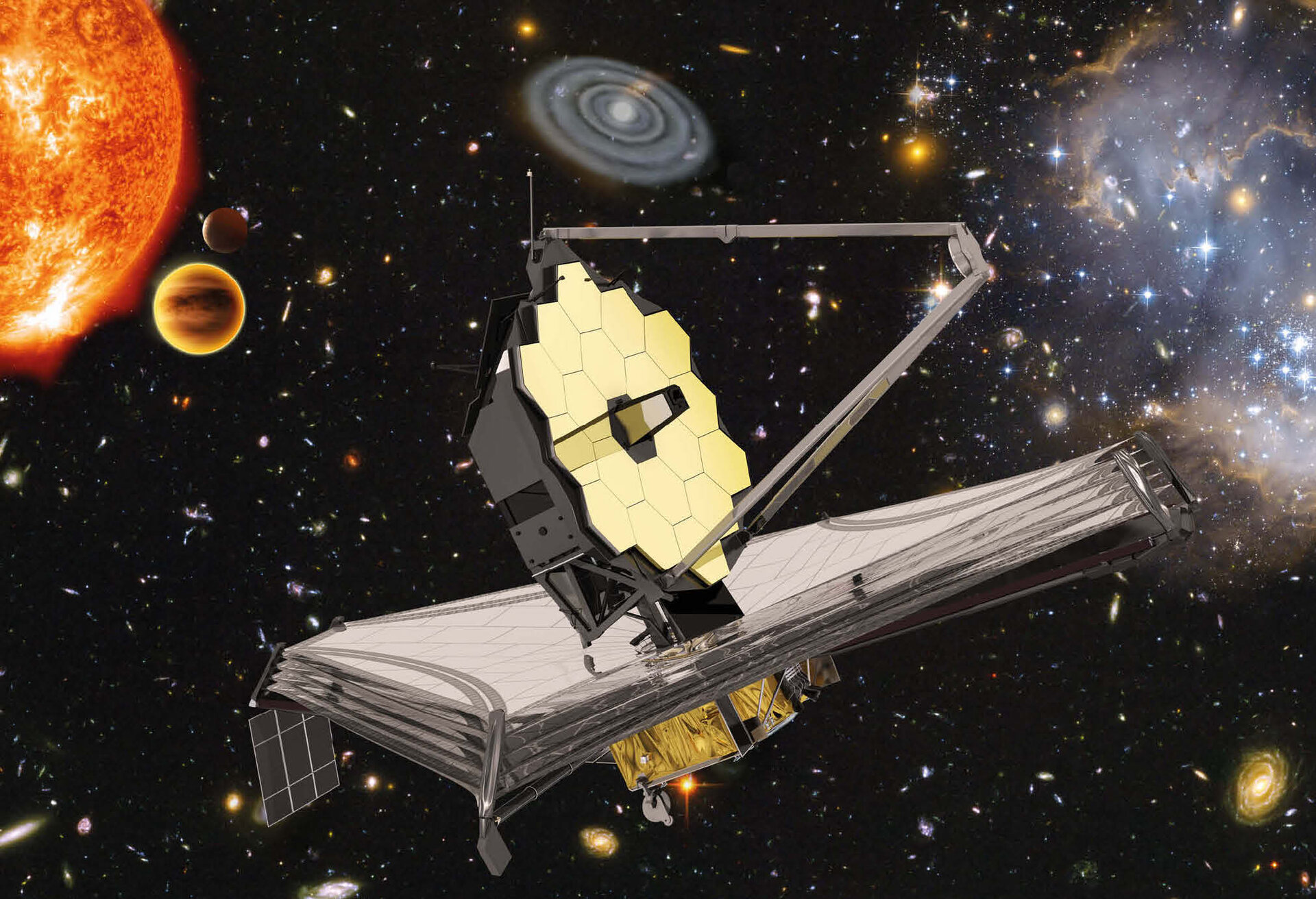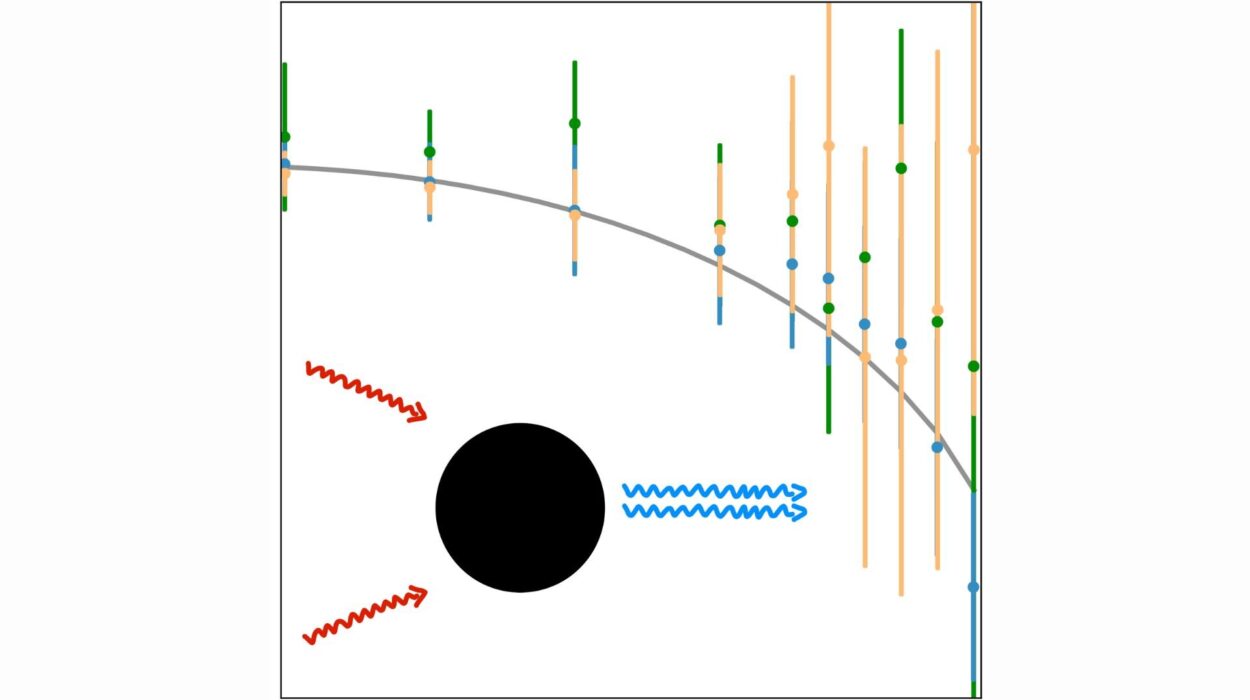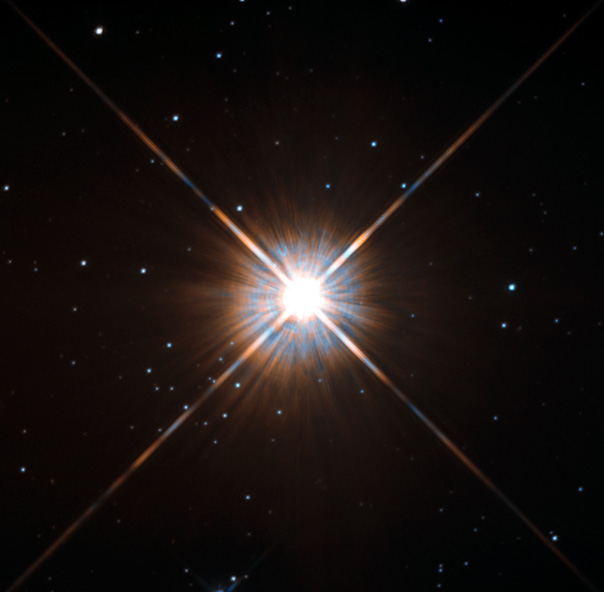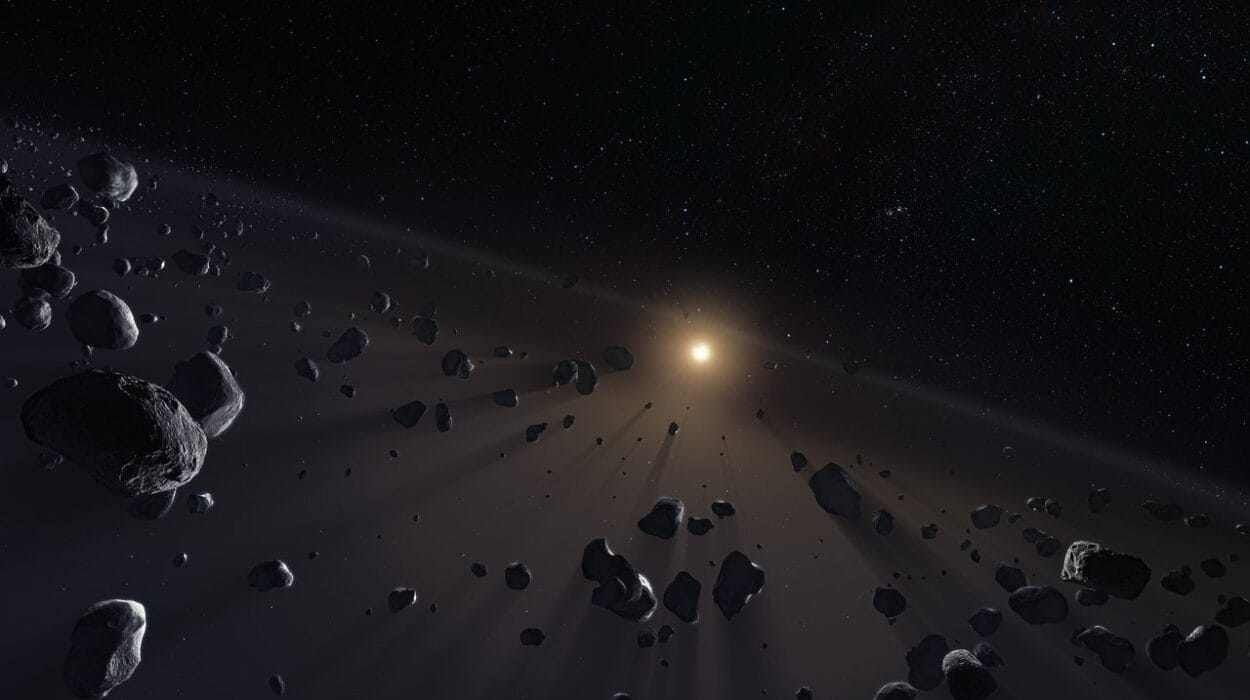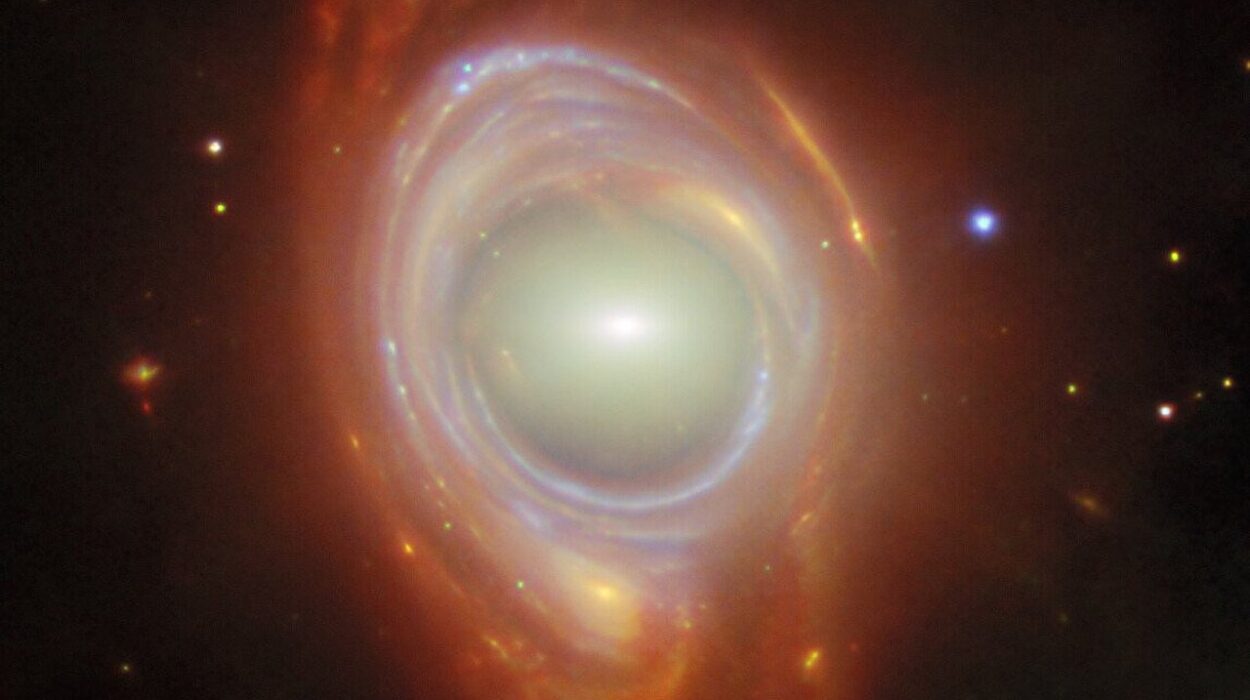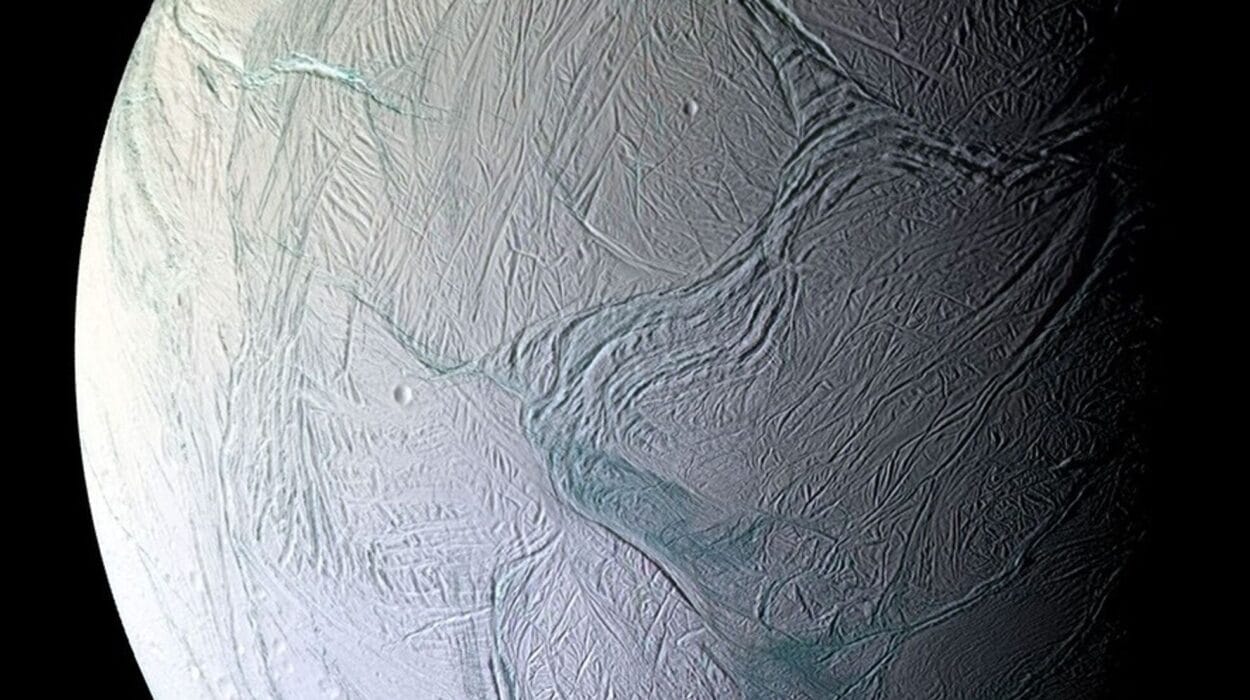For generations, humanity has peered into the cosmos with instruments that have steadily evolved from Galileo’s rudimentary telescope to the extraordinary precision of the Hubble Space Telescope. Each leap in technology has opened our eyes wider to the universe, unveiling secrets hidden in the darkness. But with the launch of the James Webb Space Telescope (JWST), we have entered a new era—one defined not merely by sharper images or deeper views, but by an entirely new way of seeing the cosmos.
The James Webb Space Telescope, often described as the successor to Hubble, is not just an improved telescope. It is a reimagining of what it means to observe space. With its 6.5-meter golden mirror, cryogenically cooled instruments, and unmatched sensitivity in the infrared spectrum, JWST is transforming our understanding of the cosmos at nearly every scale—from the atmospheres of exoplanets to the dawn of the first stars. It is, in the truest sense, changing astronomy.
From the Earth to L2: The Journey and Design
The journey of JWST is as remarkable as the data it collects. After more than two decades of planning, engineering, delays, and budget overruns, the telescope was finally launched on December 25, 2021. Nestled aboard an Ariane 5 rocket, it traveled not to low-Earth orbit like Hubble, but to the second Lagrange point (L2), nearly 1.5 million kilometers from Earth. There, it orbits the sun in sync with our planet, sheltered in the gravitational balance that allows it to maintain a stable position with minimal fuel consumption.
The design of JWST is nothing short of revolutionary. Unlike Hubble, which primarily observes in the visible and ultraviolet spectra, JWST is an infrared observatory. This allows it to peer through dust clouds, see the faint heat of distant galaxies, and detect light stretched to longer wavelengths by the expansion of the universe. Its golden mirror—composed of 18 hexagonal segments—collects more light than any previous space telescope, making it the most powerful observational tool ever sent into space.
But perhaps the most dramatic feature is its enormous sunshield, the size of a tennis court, which protects the instruments from the heat of the sun, Earth, and moon. This multilayered structure allows JWST to operate at temperatures below 50 Kelvin—necessary for observing the faint infrared signals from the edge of the universe.
Looking Back in Time: Witnessing Cosmic Dawn
One of the primary scientific goals of JWST is to observe the first stars and galaxies that formed after the Big Bang—an epoch known as “cosmic dawn.” These objects are so distant that their light has taken over 13 billion years to reach us, and by the time it arrives, it has been redshifted into the infrared spectrum due to the expansion of the universe.
Previous telescopes, including Hubble, struggled to capture this ancient light. JWST, with its infrared capabilities and enormous light-gathering power, is designed precisely for this task. Already, JWST has detected galaxies that existed when the universe was less than 400 million years old—some of the earliest structures ever observed.
These discoveries are not just about pushing records. They challenge existing models of galaxy formation, which predicted that such complex and massive galaxies should not have formed so early. JWST’s data suggest that star formation and galaxy assembly began earlier and proceeded more rapidly than previously thought, forcing astronomers to rethink how the early universe evolved.
The Surprising Complexity of Early Galaxies
One of the most unexpected revelations from JWST’s early observations is the complexity and brightness of some of the first galaxies. These ancient systems are not the chaotic, small assemblages that cosmologists expected. Instead, some appear surprisingly well-structured, with evidence of rotating disks, heavy elements, and vigorous star formation.
The presence of such mature features in such a young universe suggests that the processes of chemical enrichment and structural formation happened more rapidly than models predicted. It also raises new questions about the role of dark matter, feedback from black holes, and the initial conditions of the early cosmos.
These galaxies are also surprisingly numerous. Based on data from JWST’s deep-field surveys, it seems that early galaxies are more abundant than previous observations implied. This higher-than-expected number density could mean that the universe formed stars at a much higher rate in its infancy, possibly affecting everything from reionization timelines to the formation of large-scale structure.
Rewriting the Story of Star Birth
Star formation is one of the most fundamental processes in the universe, yet it remains one of the most mysterious. Hubble and ground-based observatories have captured breathtaking images of stellar nurseries, like the Pillars of Creation in the Eagle Nebula. But these views are often obscured by thick clouds of dust and gas, which block visible light.
Infrared light, however, can penetrate these shrouds, allowing JWST to reveal the hidden birthplaces of stars with extraordinary clarity. Its observations of stellar nurseries in our own galaxy and beyond have already begun to transform our understanding of how stars form, evolve, and interact with their environments.
For example, JWST has shown the earliest stages of protostar formation, capturing the moment when gravity pulls gas and dust into a dense core, initiating nuclear fusion. It has also tracked the complex dance of jets, outflows, and shock waves that sculpt the surrounding clouds and influence the formation of neighboring stars and planetary systems.
These observations are not just beautiful—they are essential for building a complete picture of how galaxies grow and evolve over time.
Exoplanets and the Search for Life
Perhaps the most widely anticipated use of JWST is in the study of exoplanets—worlds orbiting stars beyond our solar system. While thousands of exoplanets have been discovered over the past two decades, JWST is the first telescope with the sensitivity to analyze their atmospheres in detail.
By observing the light of a star as it filters through a planet’s atmosphere during a transit, JWST can identify the chemical signatures of various gases—water vapor, carbon dioxide, methane, and potentially even biosignatures like oxygen or ozone. These observations open a new frontier in the search for life beyond Earth.
Already, JWST has measured atmospheric compositions for several exoplanets, including hot Jupiters and smaller, potentially rocky worlds. Its spectroscopic precision is orders of magnitude better than previous instruments, allowing scientists to detect subtle features that were previously invisible.
One particularly exciting development is JWST’s ability to study temperate exoplanets in the habitable zones of red dwarf stars. These cool stars are the most common in the galaxy, and many host Earth-sized planets. By targeting systems like TRAPPIST-1, JWST offers a chance to assess whether any of these nearby planets have atmospheres—and if so, whether they might be suitable for life.
Planet Formation in Real Time
In addition to studying exoplanets themselves, JWST is also revolutionizing our understanding of how planetary systems form. By observing young stars surrounded by protoplanetary disks—rings of gas and dust left over from star formation—JWST captures the environments where planets are born.
Its infrared eyes can detect the heat emitted by tiny dust grains, icy molecules, and newly forming planets. These observations reveal the processes by which disks evolve, coalesce, and eventually give rise to full-fledged planetary systems.
For example, JWST has observed gaps and rings within disks that may be carved by forming planets. It has also detected complex organic molecules in these disks—molecules that may serve as the raw ingredients for life. By studying these early stages of planet formation, JWST allows scientists to trace the story of planetary systems from their very beginnings.
Probing the Atmospheres of Solar System Worlds
While much of the attention focuses on JWST’s deep-space capabilities, it is also making significant contributions closer to home. The telescope has turned its infrared gaze on objects within our own solar system, from asteroids and moons to gas giants and icy worlds.
For instance, JWST has studied the atmospheres of Jupiter and its moons, providing new insights into weather patterns, auroras, and chemical compositions. It has examined the icy plumes of Enceladus and the thick haze of Titan, two moons of Saturn with intriguing potential for habitability.
Even distant, frozen bodies like Neptune and Uranus have come under JWST’s scrutiny. These outer planets, long neglected by previous missions, are now being studied in unprecedented detail. The telescope’s infrared instruments can penetrate their clouds and detect thermal emissions, revealing atmospheric dynamics and seasonal changes.
These observations enrich our understanding of the solar system’s diversity and help place Earth in a broader planetary context.
Illuminating Black Holes and the Hearts of Galaxies
Black holes, the enigmatic regions of spacetime where gravity becomes infinite, are among the most mysterious objects in the universe. JWST is shedding new light—literally—on how they form, grow, and influence their surroundings.
By observing the centers of galaxies, JWST can study the supermassive black holes that lurk there. Its infrared capabilities allow it to peer through the dense dust clouds that often obscure galactic nuclei. This enables the study of black hole accretion disks, jets, and feedback processes with stunning detail.
One key area of research is the role of black holes in galaxy evolution. As these giants feed on surrounding material, they release immense energy that can heat gas, suppress star formation, or even trigger it. Understanding this interplay is essential to unraveling the history of galaxies across cosmic time.
JWST has also observed intermediate-mass black holes—objects that may represent the missing link between stellar-mass and supermassive black holes. These discoveries help fill a crucial gap in our knowledge and provide clues about how black holes evolve.
Uncovering the Chemistry of the Cosmos
One of JWST’s most transformative capabilities is its ability to perform spectroscopy—breaking light into its component wavelengths to identify the chemical makeup of celestial objects. With its powerful spectrographs, JWST is conducting a cosmic census of atoms and molecules across the universe.
This includes detecting heavy elements like carbon, oxygen, nitrogen, and iron in the earliest galaxies, helping to trace the process of chemical enrichment. It also involves identifying water, carbon dioxide, and other molecules in planetary atmospheres and protoplanetary disks.
By mapping the distribution of these elements, JWST is revealing how the universe went from a simple mix of hydrogen and helium after the Big Bang to the rich chemical complexity needed for stars, planets, and life.
Its spectroscopy tools are also being used to study dying stars, supernova remnants, and interstellar clouds—regions where elements are forged, dispersed, and recycled. These data are essential for understanding the life cycles of matter and the cosmic web of star formation and decay.
Changing How We Do Astronomy
Perhaps the most profound impact of JWST is not any single discovery, but how it is changing the way astronomy is done. With its massive datasets, multi-wavelength observations, and collaborative structure, JWST is fostering a new model of scientific research.
Observations are shared among international teams, data is released to the public, and research is increasingly interdisciplinary. Astronomers, planetary scientists, chemists, and physicists are working together to interpret the telescope’s findings, leading to a more holistic understanding of the cosmos.
The telescope is also pushing the boundaries of data analysis. With its incredible sensitivity, JWST is detecting signals that require new models, software, and computational methods to interpret. It is teaching us not only about the universe, but about the limitations of our theories and the need for fresh thinking.
The Future of Discovery
As of this writing, JWST has only just begun its mission, which is expected to last at least a decade. Yet even in its early stages, it has rewritten textbooks, overturned assumptions, and opened new realms of inquiry. The telescope has already demonstrated that the universe is more complex, dynamic, and surprising than we ever imagined.
Future observations will explore the atmospheres of temperate rocky planets, trace the birth of the first stars, and probe the most distant reaches of space and time. JWST may even detect the first evidence of life beyond Earth—or uncover clues that challenge our understanding of life’s uniqueness.
It is a tool not only for exploration but for inspiration, a beacon that invites us to look up and wonder anew. Just as Galileo’s telescope redefined humanity’s place in the cosmos, the James Webb Space Telescope is redefining our understanding of where we came from—and where we might be going.
